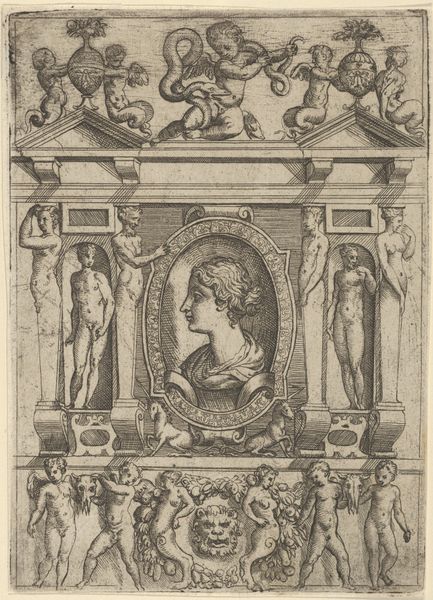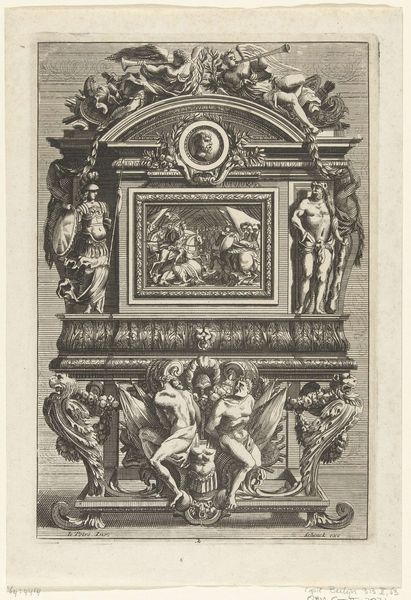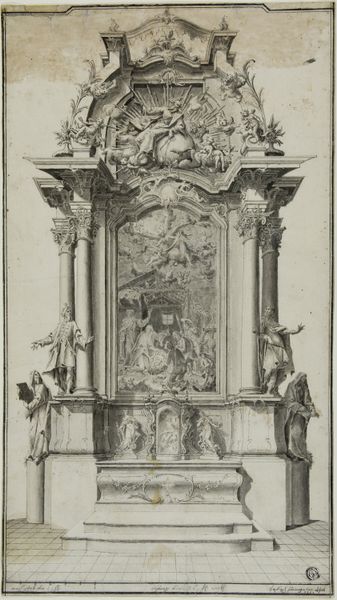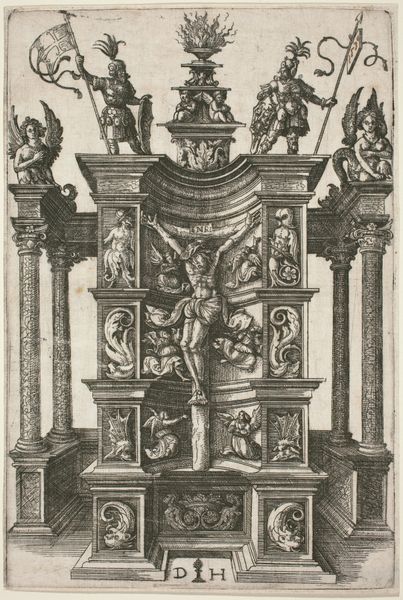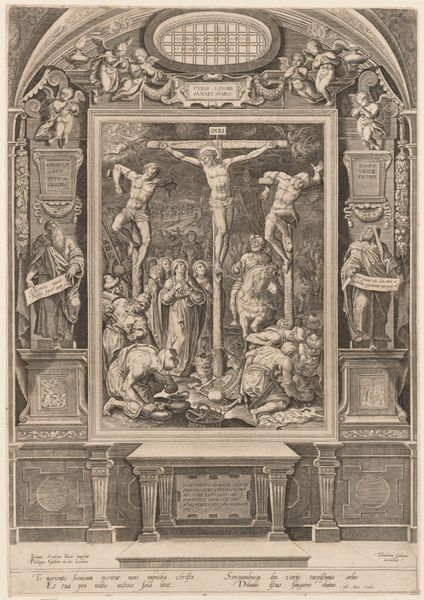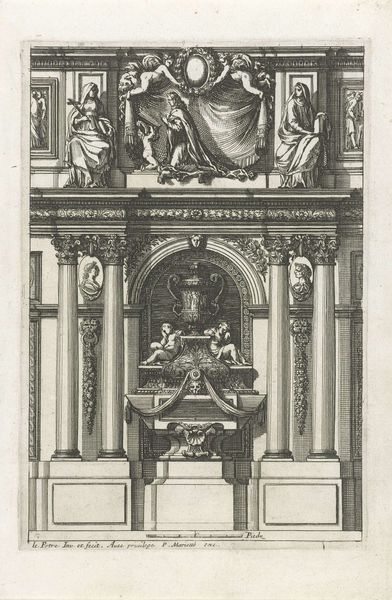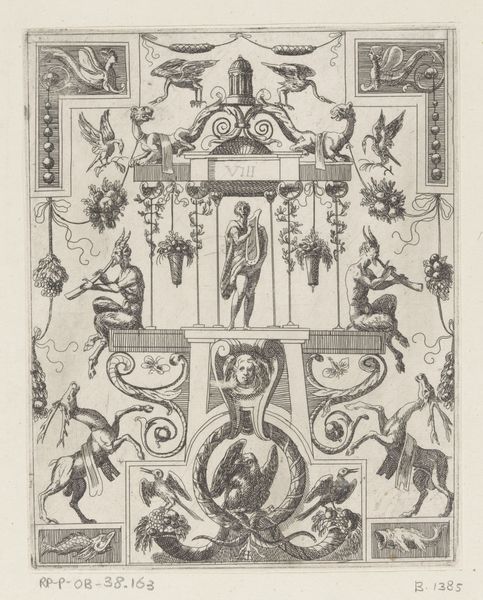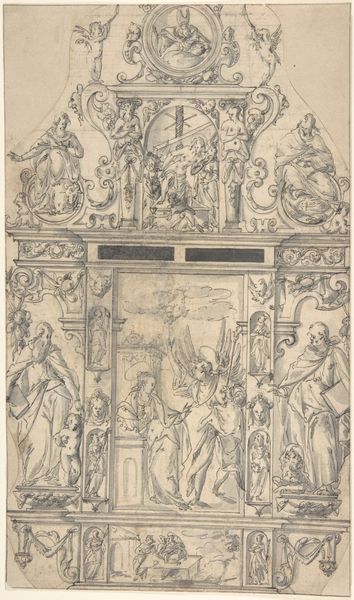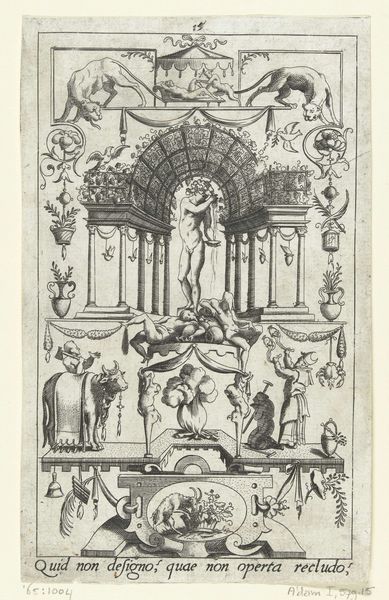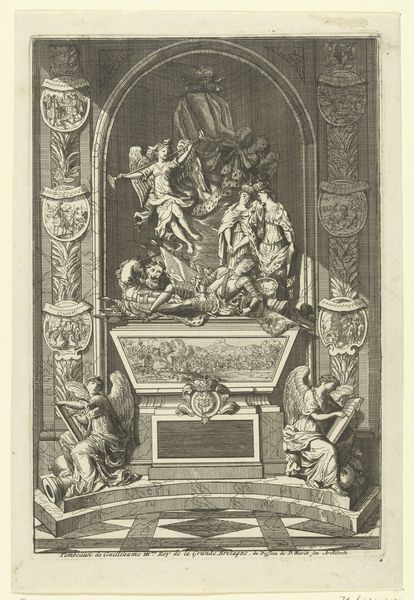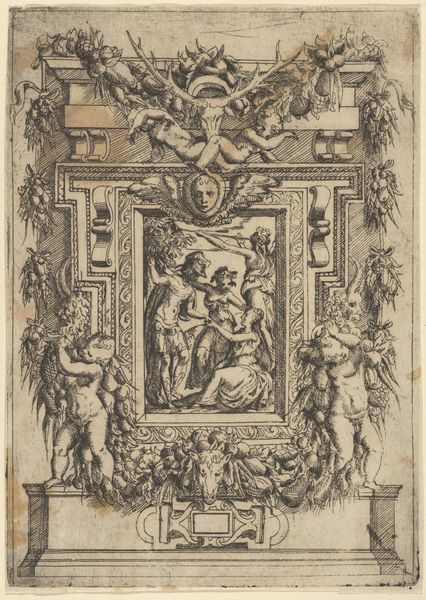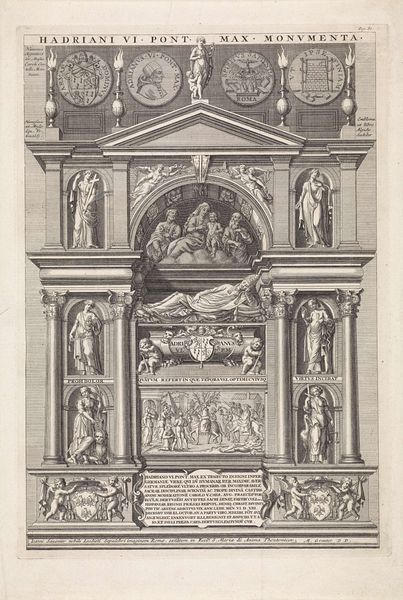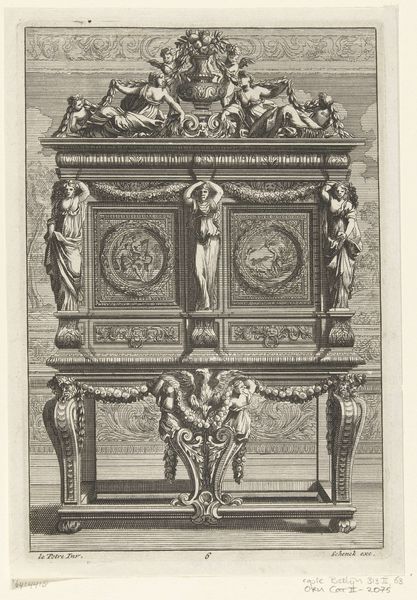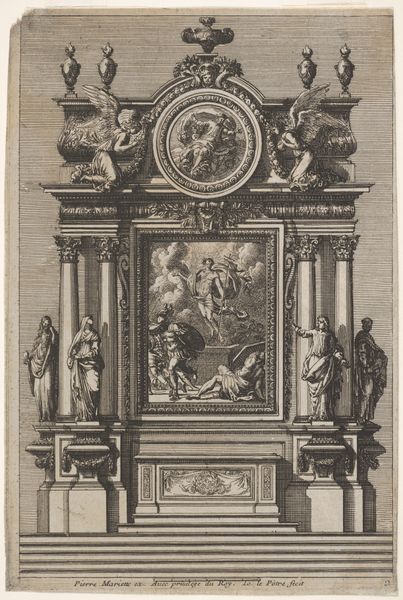
Blazoen van de Haarlemse rederijkerskamer De Wijngaertrancken 1550
0:00
0:00
drawing, print, ink, engraving
#
drawing
#
pen drawing
# print
#
pen sketch
#
figuration
#
11_renaissance
#
ink
#
line
#
northern-renaissance
#
engraving
Dimensions: height 290 mm, width 184 mm
Copyright: Rijks Museum: Open Domain
Curator: This is Dirck Volckertsz Coornhert's "Blazoen van de Haarlemse rederijkerskamer De Wijngaertrancken," dating back to 1550. It’s currently held in the Rijksmuseum. Coornhert employed ink in this engraving. Editor: The detail is astonishing. It's very intricate and linear; the hatching and fine lines create a dynamic surface. A really intriguing complexity, especially with the interplay between text and imagery. Curator: Indeed, the blazon, or heraldic achievement, functions as a visual representation of the Haarlem Chamber of Rhetoric, the Wijngaertrancken, literally "vine tendrils." These chambers were societies dedicated to poetry, drama, and intellectual pursuits. Editor: Rhetoric here being understood as a productive process, too – this isn't just about lofty ideals but the nitty-gritty work involved in creating and disseminating ideas, all the human labor that underpins intellectual work. What do you see in the figuration? Curator: Absolutely, we must remember the broader social and intellectual currents of the time. The central female figure represents Rhetorica enthroned, surrounded by virtues that promote civil engagement. Editor: It all speaks to this need for these virtues in social life. Curator: Precisely! The allegorical figures promote understanding, virtue, and engagement – ideals these rhetoric chambers hoped to instill within the broader populace. Even those strange satyrs seem to guard those ideals by protecting the architectural frames on the work. Editor: These choices in media—drawing, print, engraving—made rhetoric and images broadly accessible. It wasn’t restricted to an elite audience, but to the community. Curator: Looking at this work through an intersectional lens, we see how knowledge production was inextricably linked to power structures and societal values. Editor: And these lines between art, craft, and intellectual endeavor weren’t so rigid back then either! Coornhert himself wasn't just an artist but a printer, philosopher, and theologian too. Curator: Understanding this image through art history and contemporary theory provides us with insight into a complicated historical period, its intellectual communities, and the values they embraced. Editor: And it encourages us to reconsider what labor and knowledge can bring about through a tangible visual and rhetorical display.
Comments
No comments
Be the first to comment and join the conversation on the ultimate creative platform.
